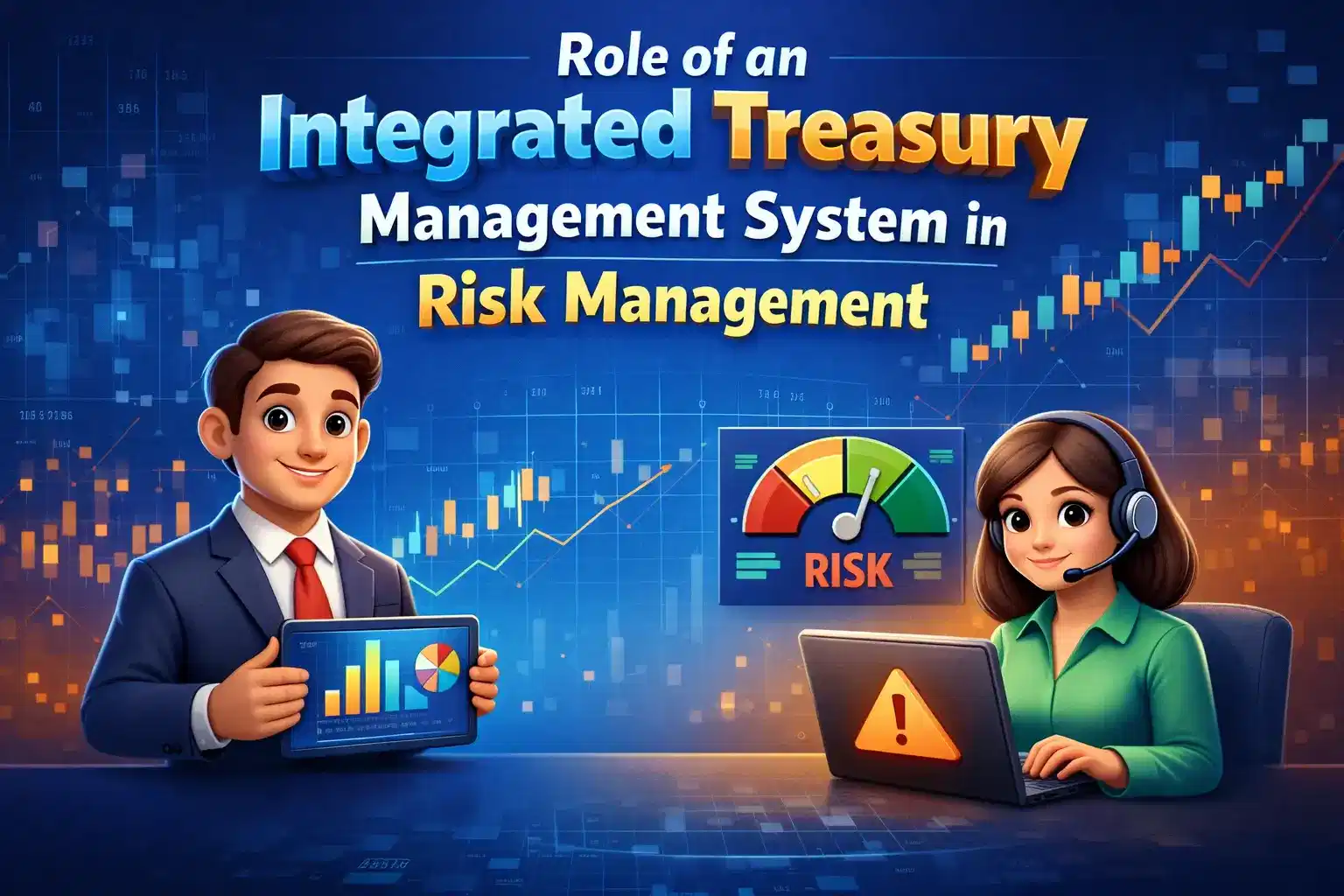The Impact of Regulatory Changes on Reconciliation Processes and the Need for Automation
Did you know that over 80% of financial professionals find reconciliation processes more complex due to increased regulatory scrutiny? This statistic underlines the profound effect of regulatory changes on financial practices. Organizations face stringent requirements from laws like the Dodd-Frank Act and the Sarbanes-Oxley Act. The necessity for automation in reconciliation processes has never been more pressing.
Accurate financial reporting is vital for compliance and maintaining stakeholder trust. Enhanced automation can greatly reduce errors in manual reconciliation. This streamlines processes and ensures adherence to regulatory standards.

Key Takeaways
- Regulatory changes have made reconciliation processes more complex for financial professionals.
- Automation is critical for accurate financial reporting and regulatory compliance.
- Laws like Dodd-Frank and Sarbanes-Oxley stress the importance of strict financial practices.
- Automating reconciliation can significantly lower error rates.
- Streamlined reconciliation processes enhance stakeholder trust.
Understanding Reconciliation Processes in Financial Systems
Reconciliation processes are essential for the accuracy and integrity of financial systems. They ensure discrepancies are found and fixed quickly. This builds trust in the data used for decision-making and compliance. Accounts reconciliation, for example, compares bank statements with internal accounts to verify their match.
Key steps in reconciliation include a detailed examination of transactions. This involves several tasks:
- Gathering necessary documents and data.
- Identifying discrepancies between records.
- Investigating the reason for any mismatches.
- Adjusting entries to correct errors.
Effective implementation of these processes is critical for organizations. It ensures accuracy needed for audits and regulatory compliance. An efficient reconciliation method also prevents financial losses and supports transparent financial reporting.
The shift from manual to automated reconciliation reflects the growing complexity of financial transactions. Financial systems are becoming more complex, highlighting the need for technologies that streamline reconciliation. Automation reduces errors and boosts efficiency, freeing financial professionals to focus on strategic tasks.
Impact of Regulatory Changes on Reconciliation Processes
Recent regulatory changes have dramatically altered the financial reconciliation landscape. Organizations now face stricter compliance demands, leading to a major shift towards automated reconciliation. This change aims to boost accuracy and meet regulatory standards.
The Shift Towards Automated Reconciliation
Advances in technology have been key in driving the move to automated reconciliation. New reconciliation software and cloud-based solutions help streamline processes. They ensure compliance while reducing errors and speeding up reconciliation. This allows companies to concentrate on other essential tasks.
Challenges Faced in Reconciliation Processes
Despite progress, many organizations struggle with reconciliation challenges. Outdated systems and manual practices often lead to errors and data discrepancies. These issues highlight the need for automated solutions. They can greatly reduce mistakes and help organizations keep up with regulatory changes.
The Need for Reconciliation Automation in Modern Finance
Financial systems are evolving rapidly, making reconciliation automation more critical than ever. This technology tackles the hurdles of manual processes and boosts efficiency. It's essential for companies aiming to refine their financial operations to recognize the value of automated reconciliation.
Benefits of Automated Reconciliation
Automated reconciliation brings significant advantages to financial workflows. Key benefits include:
- Enhanced Accuracy: Automation reduces human errors, resulting in more accurate financial records.
- Increased Efficiency: Automated systems handle transactions quicker, cutting down reconciliation time.
- Substantial Time Savings: Employees can focus on strategic tasks, not just manual data entry.
Research shows that adopting reconciliation automation can cut processing times by up to 50%. This not only streamlines operations but also enhances financial accuracy.
Common Misconceptions About Reconciliation Automation
Despite its benefits, myths about reconciliation automation persist. Many believe it eliminates the need for human touch. While it significantly reduces manual work, human oversight is critical for monitoring and addressing exceptions. It's important for organizations to understand these misconceptions before embracing reconciliation automation.
Read More: The Importance of Real-Time Data in Reconciliation Software
Exploring Software Tools for Bank Account Reconciliation
Organizations are turning to software for bank reconciliation to streamline their financial processes. Tools like Kosh.ai, QuickBooks, Xero, and BlackLine are leading the way. They offer unique features that automate reconciliation, making it easier to match bank transactions with internal records.
When evaluating bank rec software, consider these key areas:
- Transaction Matching: Automatic transaction matching cuts down manual effort and error during reconciliation.
- Reporting Features: Detailed reporting tools help banks identify discrepancies and analyze them effectively.
- User Interface Ease: An intuitive interface improves user experience, making it easier to adopt and use the software.
Reconciliation software is essential for banks to meet regulatory standards and boost efficiency. Businesses aim to integrate these tools to enhance accuracy and reduce time spent on reconciliation.
Key Features of Effective Reconciliation Solutions
Effective reconciliation solutions are vital for financial accuracy and compliance. Organizations aiming to improve their reconciliation processes must focus on key features of advanced accounting reconciliation software. These features ensure that financial systems operate smoothly and efficiently.
Automation Capabilities of Accounting Reconciliation Software
Automation is a cornerstone of effective accounting reconciliation software. Key functionalities include:
- Real-time data updates that provide current financial information to users.
- Automated transaction matching, which significantly reduces the time spent on manual checks.
- Alerts and notifications that instantly inform users of discrepancies, promoting swift resolution.
- Customizable reporting options to track reconciliation progress and identify patterns.
By leveraging these automation capabilities, organizations can enhance their efficiency and accuracy. This directly impacts their financial integrity.
Integration with Existing Financial Systems
Seamless integration with financial systems is critical for any reconciliation solution. Effective reconciliation processes rely on:
- Compatibility with Enterprise Resource Planning (ERP) systems for consolidated data management.
- Easy connection to other financial applications, enabling a holistic view of financial health.
- APIs that facilitate data exchange between different systems, improving overall workflow.
- Centralized dashboards that provide insights across platforms, promoting better decision-making.
Integration with financial systems allows businesses to manage their financial data more effectively. This enhances overall operational efficiency.
Read More: Top 7 Challenges in Financial Reconciliation and How Automation Solves Them
How Regulatory Compliance Drives the Adoption of Reconciliation Automation
Recent regulatory changes are pushing organizations towards reconciliation automation. The Dodd-Frank Act and Basel III framework demand detailed tracking and reporting of financial transactions. These rules highlight the need for accurate and transparent financial practices.
Experts note that compliance drives technology adoption in finance. Automated reconciliation system help verify transaction data efficiently. This enables quick responses to regulatory needs. Such systems ensure financial records are accurate and complete, essential for meeting strict compliance standards.
Ignoring regulatory compliance can result in heavy penalties and damage to reputation. Financial institutions aim to boost efficiency while reducing risks. Adopting reconciliation automation is a key strategy to meet these challenges. It's vital for organizations to integrate automated systems to stay compliant.
Best Practices for Implementing Reconciliation Automation
Implementing reconciliation automation demands meticulous planning and execution. Adhering to best practices can greatly boost efficiency and precision. It's essential to focus on two key areas: selecting the appropriate reconciliation software and ensuring thorough training and support for employees.
Choosing the Right Reconciliation Software for Your Needs
Choosing the right reconciliation software is critical for achieving your automation objectives. Consider these factors:
- Scalability: Make sure the software can scale with your business, handling increased transaction volumes.
- User-Friendliness: Choose solutions that are intuitive and straightforward, reducing the learning curve.
- Customization Capabilities: Seek software that allows customization to meet your unique reconciliation needs.
Training and Support for Smooth Transitions
Training for reconciliation automation is key to unlocking the system's full capabilities. Develop a robust training program that includes:
- Vendor-led training sessions that focus on software features and functionalities.
- Ongoing support channels for employees to address queries and challenges after implementation.
- Regular updates and refreshers to keep staff informed about software upgrades and best practices.
The Future of Reconciliation Processes in Light of Regulatory Changes
The landscape of reconciliation processes is on the cusp of a significant transformation, driven by ongoing regulatory changes. Organizations must adapt swiftly to remain compliant, ushering in a future marked by innovation and agility. As regulatory demands evolve, companies will increasingly turn to artificial intelligence and machine learning. These technologies will help refine and enhance reconciliation practices.
These advancements have the capability to boost predictive analytics, enabling real-time detection of discrepancies and compliance issues. This data-driven strategy will significantly enhance reconciliation accuracy, facilitating the rapid resolution of financial discrepancies.
Further, trends in validating transactions are emerging, set to redefine future reconciliation practices. These trends include:
- Integration of real-time data strategies for enhanced accuracy and timely reconciliations
- Automated compliance checks embedded in the reconciliation processes
- Greater transparency and accessibility of financial data for stakeholders
As regulatory changes continue to drive these evolving practices, firms embracing these innovations will not only meet compliance standards. They will also secure a competitive edge in the financial sector.
Read More: From Zero to Hero: Boosting Business Performance with Financial Automation
Conclusion
The shift towards automation in the financial industry is profound, driven by regulatory changes. This shift demands that organizations adapt quickly to meet new standards. Reconciliation automation is key, as it improves efficiency, cuts down on errors, and boosts the accuracy of financial reports.
Regulatory changes have a significant impact on finance, pushing firms to adopt advanced reconciliation tools. By leveraging these technologies, companies can streamline their operations and stay ahead in a fast-evolving market. For today's financial institutions, prioritizing reconciliation automation is a must for staying compliant.
Investing in robust reconciliation solutions is now a critical need. This investment helps organizations better handle regulatory complexities and improve their financial reporting. The future of finance is clearly tied to automation, a path that companies must embrace to thrive.
Read More: How Will AI Impact Finance? New Research Uncovers Key Findings
FAQs
Q: Why is automation important in reconciliation processes?
Automation in reconciliation is driven by strict regulatory compliance needs. It boosts accuracy, cuts down on manual errors, and boosts efficiency. This allows organizations to handle complex financial transactions more effectively.
Q: How does reconciliation software support compliance?
Reconciliation software aids in meeting regulatory compliance by providing real-time data updates and audit trails. It also offers detailed reporting functionality. These features ensure accurate financial transaction recording and easy auditability, reducing non-compliance risks.
Q: What features should I look for in accounts reconciliation software?
Look for software with automation, transaction matching, integration with existing systems, user-friendly interfaces, and robust reporting tools. These ensure a smooth and efficient reconciliation process.
Q: What are some common misconceptions about reconciliation automation?
A common myth is that automation makes human oversight unnecessary. While it greatly improves efficiency, skilled personnel are vital for monitoring systems and addressing exceptions during reconciliation.
Q: What types of software tools are available for bank reconciliation?
Various software tools, like Kosh AI, QuickBooks, Xero, and BlackLine, are available for bank reconciliation. They automate the process, offer transaction matching, and ensure financial regulation compliance.
Q: How can organizations choose the right reconciliation software?
When choosing software, consider scalability, ease of use, customization, and integration with current systems. Evaluating these ensures the software meets your organization's needs.
Q: What challenges do companies face in reconciliation processes?
Companies often struggle with outdated systems, manual errors, and data discrepancies. Automated solutions can significantly reduce these issues, improving financial management efficiency.
Q: How will advancements in technology impact reconciliation processes in the future?
Future advancements, like artificial intelligence and machine learning, will be key in reconciliation. They will enhance predictive analytics, streamline validations, and improve financial reconciliation accuracy.
Contact us now










